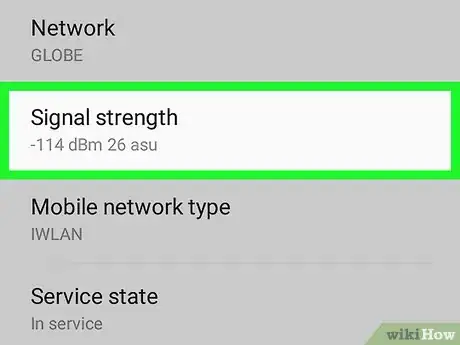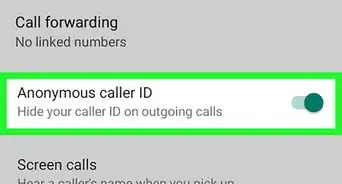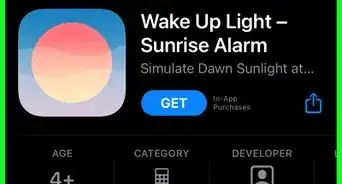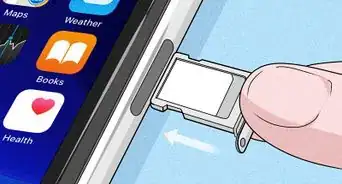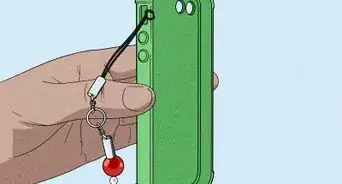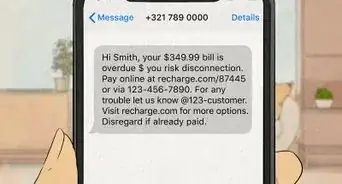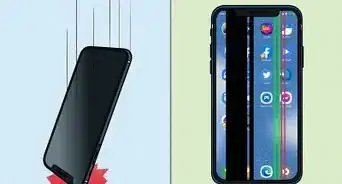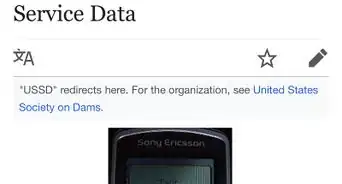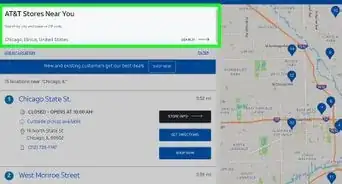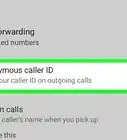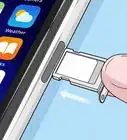This article was co-authored by wikiHow staff writer, Janice Tieperman. Janice is a professional and creative writer who has worked at wikiHow since 2019. With both a B.A. and M.A. in English from East Stroudsburg University, she has a passion for writing a wide variety of content for anyone and everyone. In her free time, you can find her working on a new crochet pattern, listening to true crime podcasts, or tackling a new creative writing project.
There are 15 references cited in this article, which can be found at the bottom of the page.
This article has been viewed 22,488 times.
Learn more...
Cell phones help keep us connected to the world around us, so it can be irritating to have a weak or nonexistent cellular signal in your home. Before you reach for the landline, there are a few options you can try to boost your signal. First, you can check your phone to see what your exact signal strength is before playing around with some of the other settings. If you want to take more drastic measures, you can invest in a signal booster, or switch phone carriers altogether.
Steps
Checking Your Phone’s Settings
-
1Determine your phone’s signal strength to see how weak it is. Dial a special number or check your settings to see the strength of your phone’s signal. If you have an iPhone, call international number #3001#12345# to activate your field testing services.[1] If you have an Android, open your settings and scroll to signal strength section. Ideally, you’ll want your signal strength to be around -60dBm.[2]
- If you have a measurement lower than -112dBM, then your phone has a very weak signal strength.
-
2Put your phone in airplane mode for 3 seconds to reset the signal. Turn your phone’s cellular services off by activating airplane mode. This can be found in your phone’s settings, or in a quick access menu. Airplane mode helps to completely disconnect your phone from your carrier, which will reset your signal.[3]Advertisement
-
3Enable WiFi calling on your phone to connect to a stronger signal. Go to your phone settings and activate WiFi calling, which allows you to make phone calls with your WiFi signal. If you have an iPhone, go to the “phone” portion of your settings to activate WiFi calling.[4] If you have an Android phone, go to the “Advanced Calling” or “Networks” section of the settings to activate calling via WiFi.[5]
Using a Signal Booster
-
1Choose a booster that works with your specific carrier. Make sure you get a product that works with all carriers, or works with the exact carrier of your phone. Some brands work with all cell phone carriers, but they can be on the pricier end, so it may be more cost-efficient to choose a signal booster that is specific to your carrier, depending on your budget and cell phone plan.[9]
- Regardless of the carrier, most signal booster products include a booster and an antenna.
-
2Plug in the booster within the room that gets the most signal. Go to the room in your house that you use the most—in other words, the room that receives the most consistent coverage. The goal of a signal booster is to make your life more convenient, and it does this by being in an accessible location.[10]
- Keep an eye on your signal bar as you walk through each room in your house. If you have an especially strong signal in one room, you might want to put the booster there.
- Check your device’s instructions to see how and where to plug in the booster.
-
3Plug in the antenna near a window. Put the antenna portion close to a window so that it’s in a good position to receive a signal. While the booster works to increase your cell phone signal, it’s unable to do this until it has something to boost in the first place.[11]
-
4Make sure that both devices are turned on and operating. Check for a power button or switch to turn on the antenna and the booster. Although this goes without saying, double check to make sure that the power is turned on, and that electricity is reaching both devices.[12]
- Once the signal booster is turned on, consider checking your phone’s signal strength. You can do this by downloading an app that lets you monitor your phone’s speed. Some good options are Speedtest by Ookla or Fast Speed Test by Netflix.[13]
Switching Phone Carriers
-
1Research the coverage area of different networks and compare it to your current carrier. Go online and look up different coverage maps for various networks. Your current location might have weaker coverage than other places.[14]
- Talk to your friends and family and see which cell phone carrier they have. This might help give you an idea of which networks are fastest in your area.
-
2Compare the monthly rate of each network to your current plan. Check the websites of different cellular services and see what the monthly cost is for a plan. Before you make any commitments, confirm whether or not you want a contract or a prepaid plan.[15]
- Make sure you have your phone’s IMEI number on hand if you do end up switching carriers. This number serves as your phone’s identity, and informs a new carrier of your phone’s hardware, along with other technical information.[16]
- If you have an iPhone, you can find your IMEI by checking in the “General” and “About” sections of your settings.
- If you have an Android, you can get the number by from the “About Phone” and “Status” portions of your settings. You can find it on either type of phone by calling international number *#06#.
-
3Opt for a plan with 4G LTE cellular service to improve your signal. Look into cell phone plans with fast connection speeds, like 4G LTE. This stands for Fourth Generation Long Term Evolution, and it works through progressive radio technology systems. If you don’t currently have 4G LTE, making the switch might boost your signal and increase your connection speed by a good margin.
- Several companies are working on 5G, or Fifth Generation technology. Ask a cell phone carrier representative when they think 5G services will be available in your area.[17]
-
4Talk to a sales representative before switching. Go to the store of a specific cell phone carrier or call ahead before switching your phone services completely. An in-person representative can answer any questions that you may have, and can explain all of your options to you.[18]
- Go to ContactHelp.com or GetHuman.com if you’re having difficulties reaching an actual person.
Things You’ll Need
Using Signal Boosting Equipment
- Signal booster (antenna and booster)
- Speed test phone applications
Warnings
- Be wary of phone cases that claim to enhance your signal. Check the reviews before making any purchases.[19]⧼thumbs_response⧽
References
- ↑ https://www.macworld.com/article/3346027/how-to-see-your-true-cellular-signal-strength-with-the-iphone-field-test-app.html
- ↑ https://www.tested.com/tech/android/557-how-to-measure-cell-signal-strength-on-android-phones/
- ↑ https://bgr.com/2015/09/05/cell-phone-signal-boost-tricks/
- ↑ https://www.pocket-lint.com/phones/news/140127-how-to-activate-three-wi-fi-calling-on-iphone
- ↑ https://ithelp.brown.edu/kb/articles/set-up-wifi-calling-on-an-android
- ↑ https://www.pocket-lint.com/phones/news/140127-how-to-activate-three-wi-fi-calling-on-iphone
- ↑ https://ithelp.brown.edu/kb/articles/set-up-wifi-calling-on-an-android
- ↑ https://www.pcmag.com/article/335085/do-you-really-need-a-mobile-hotspot
- ↑ https://m.youtube.com/watch?v=UbHFlDWVZAg&t=1m12s
- ↑ https://m.youtube.com/watch?v=UbHFlDWVZAg&t=1m15s
- ↑ https://m.youtube.com/watch?v=UbHFlDWVZAg&t=1m18s
- ↑ https://m.youtube.com/watch?v=UbHFlDWVZAg&t=1m34s
- ↑ https://www.popsci.com/test-smartphone-speed/
- ↑ https://www.reviews.org/mobile/how-to-switch-cell-phone-carriers/
- ↑ https://www.reviews.org/mobile/how-to-switch-cell-phone-carriers/
- ↑ https://www.reviews.org/mobile/how-to-switch-cell-phone-carriers/
- ↑ https://www.pcmag.com/article/345387/what-is-5g
- ↑ https://www.pcmag.com/article/361952/how-to-talk-to-a-real-person-the-ultimate-customer-support
- ↑ https://m.youtube.com/watch?v=UbHFlDWVZAg
